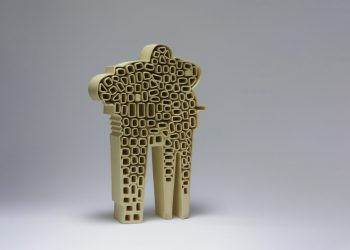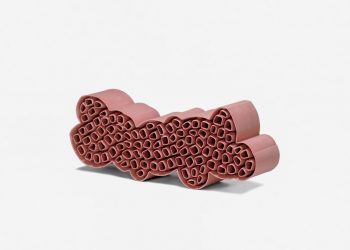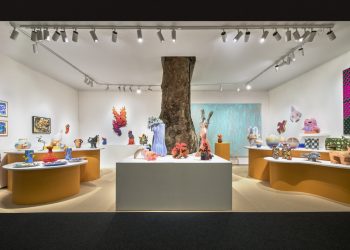Megumi Naitoh: Electronic Dust, 2018-2019
An enormous amount of open-source objects is created, shared, modified, remixed, stored, and lost online each day. These objects are licensed with copyleft, creative commons attributions, or GNU General Public License which grants the objects to be shared, altered, and used. Free from the restraints of copyright, it promotes collaboration between users and creates an ever-changing landscape in open-source communities. The work “Electronic Dust” conveys the ephemeral nature of these digital objects that exist in the cloud.
Limestone contamination in clay bodies is a major culprit in the ceramic process. The contaminated clay can be used and fired. The result may look rather fine. However, the fired clay body contaminated with lime (consisting of calcium carbonate) will expand with significant force when it is exposed to moisture in the air, causing flaking and shattering in the ceramic works days or even weeks after the firing. This is known as “lime pop”.
I am attracted to lime pop, which most ceramicists may refer to as a malfunction. Its force and energy of it, its transformational nature, was an ideal element to capture the enthusiasm and excitement that people are feeling about the open-source communities and these ever-changing digital objects. I carefully developed the recipe and firing process for this project in a controlled environment to capture the process of its force and transformation.
The open-source files are downloaded, and 3D printed in plastic as a two-part mold. Then, these two parts are taped together and filled with my wet mixture of ceramic materials with lots of lime (plaster). It will then be de-molded, dried, and fired around 1000 -1200ºC (cone 06-6). These pieces are rock-hard when they are fired. After the firing, I begin a time-lapse recording of the objects. During this recording, fired objects will expand and crumble into dust. I then edit the time-lapse video to give life to these objects. These experimental videos are made with time-lapse recordings over 6 days to 3 weeks.
Connector, 2019
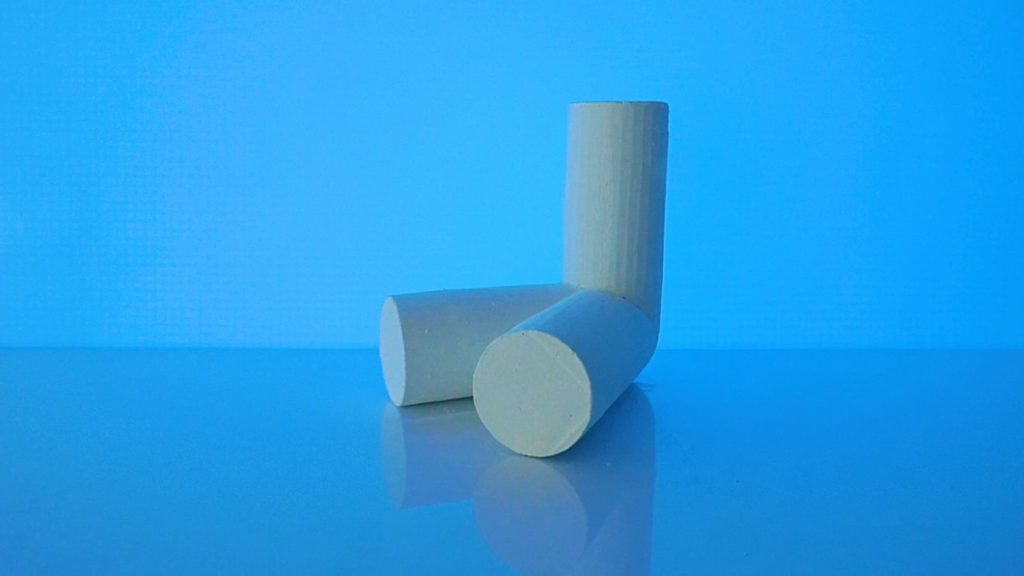
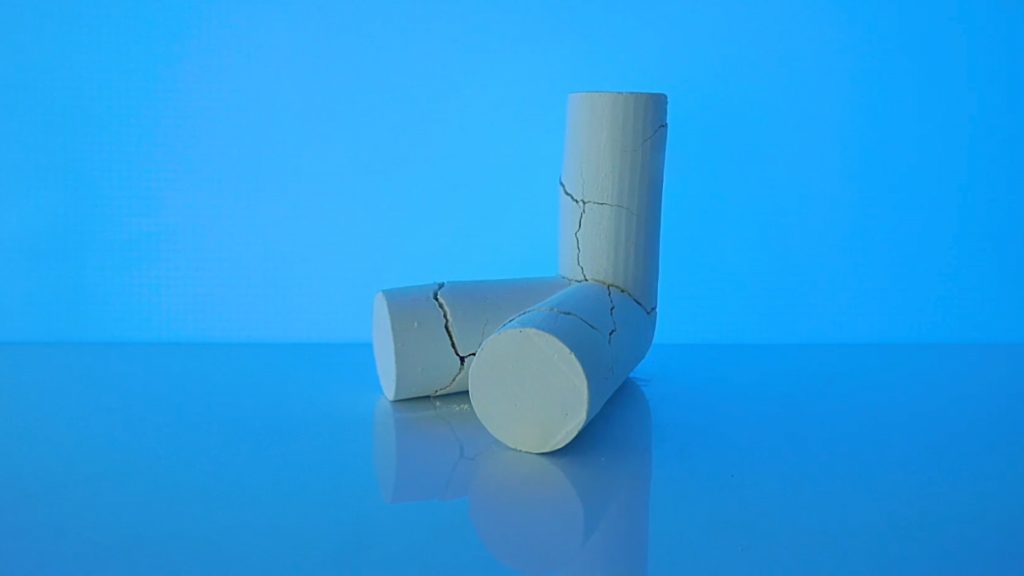
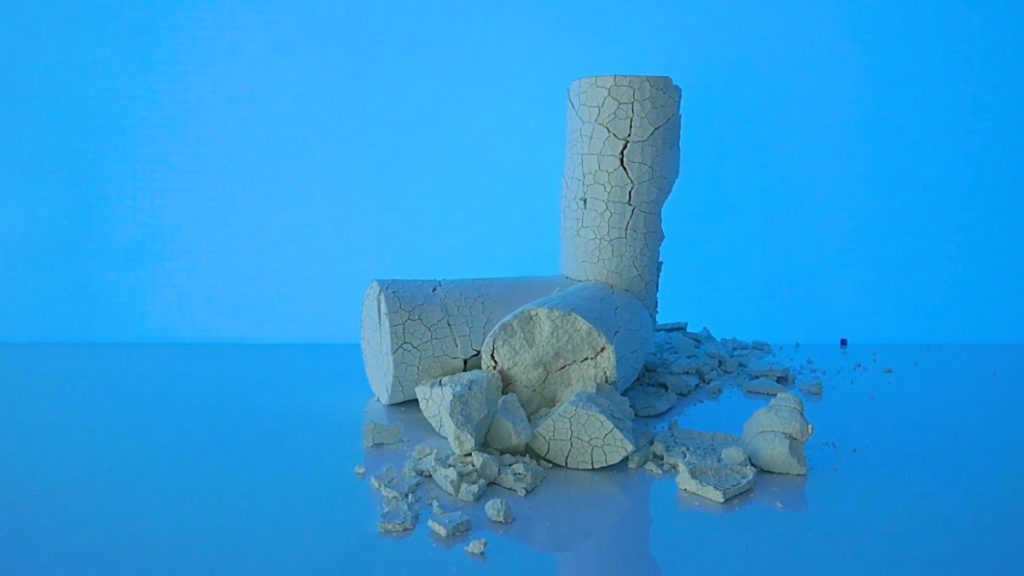
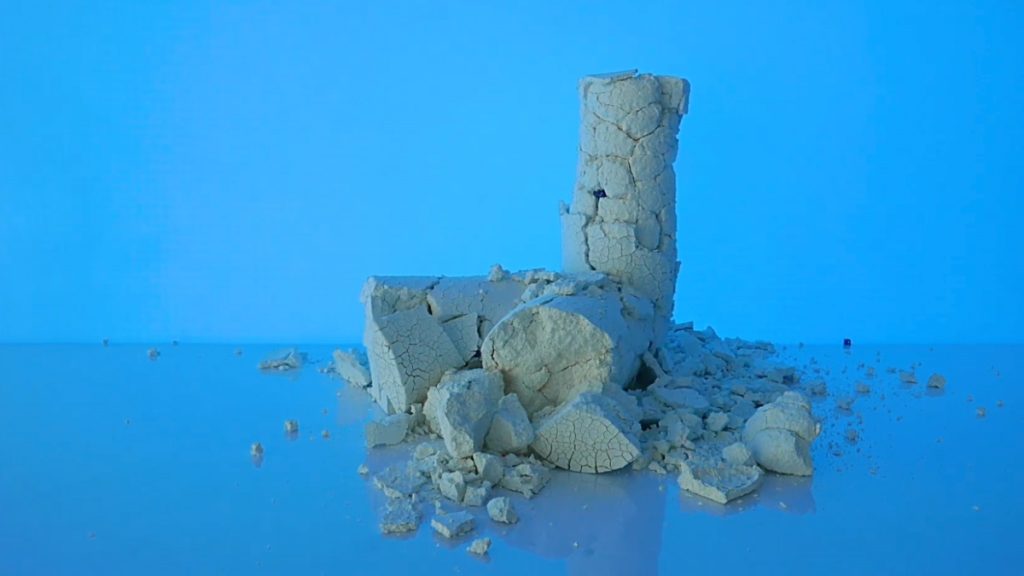
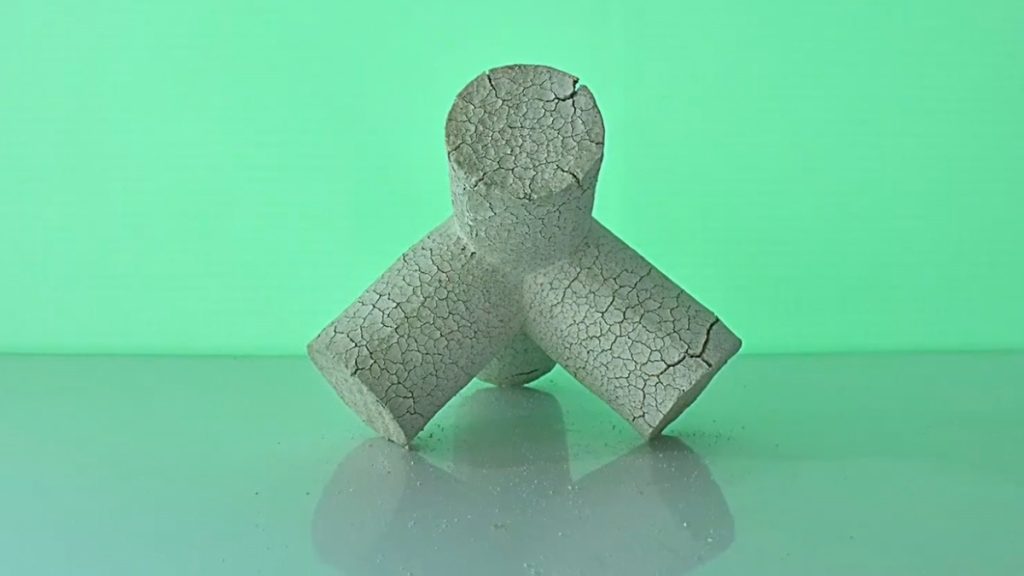
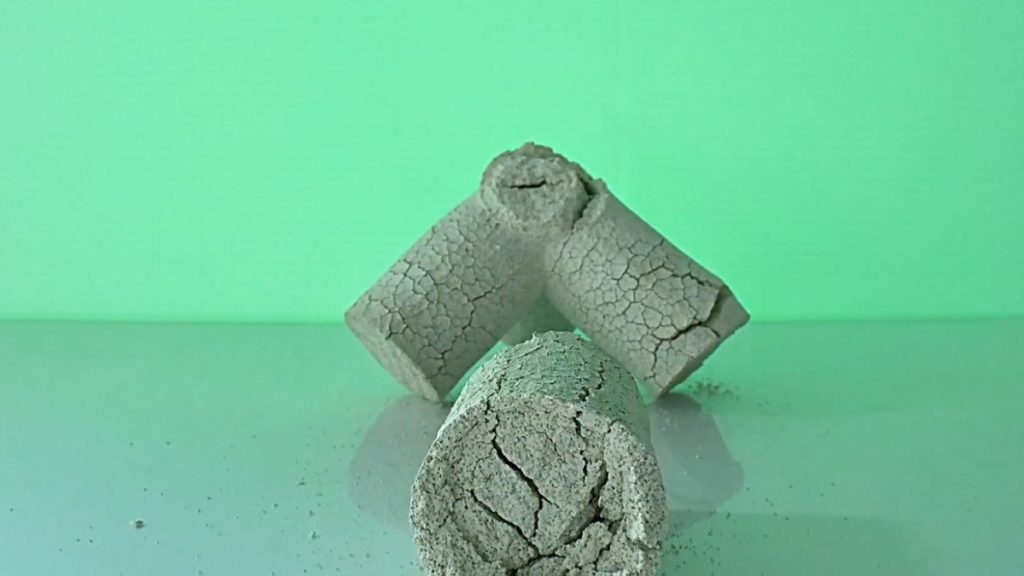
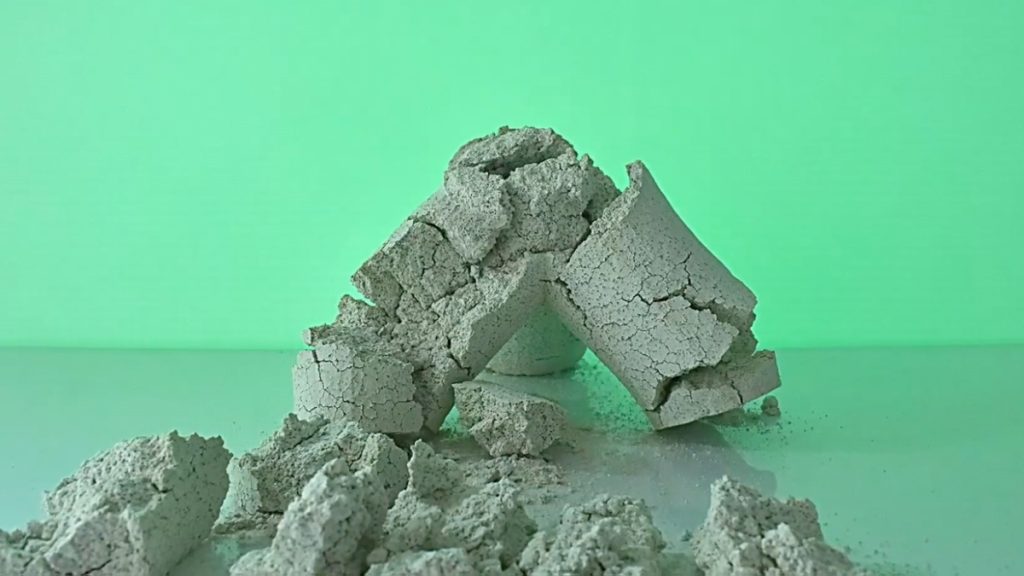
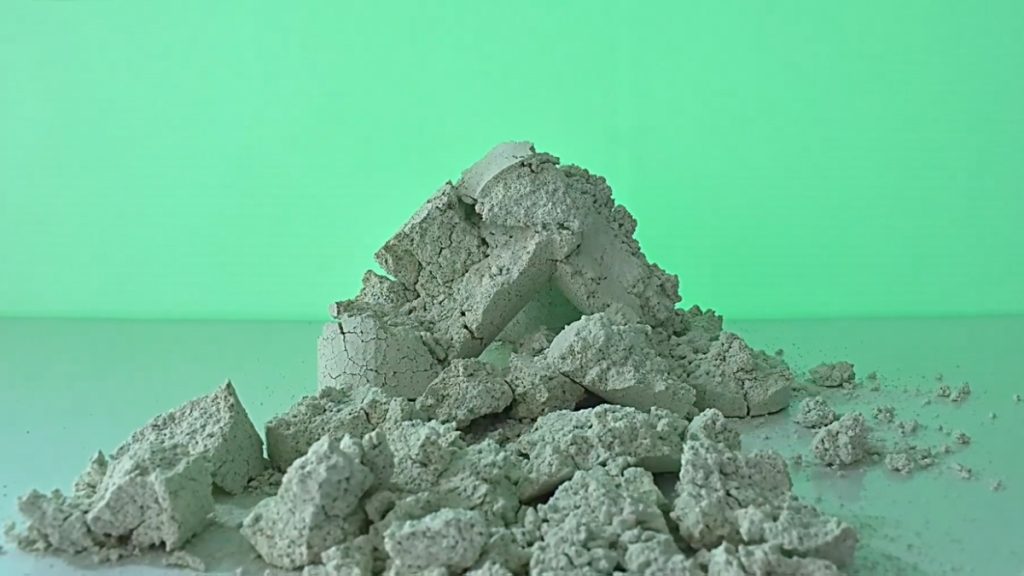
Recorded and produced in Birmingham, UK, 2019. Recording 2-3 weeks. Created with three-rod connectors files (y245 _length45_thicker, 4-way cross connector 11, Rod 90/18) that are a remix from the original (Every Rod Connector 3.0) which is available through ‘Thingiverse’ online. It is an example of how anyone can contribute to an existing file for slightly different purposes, and share them to be altered, and used.
Screwbit, 2018
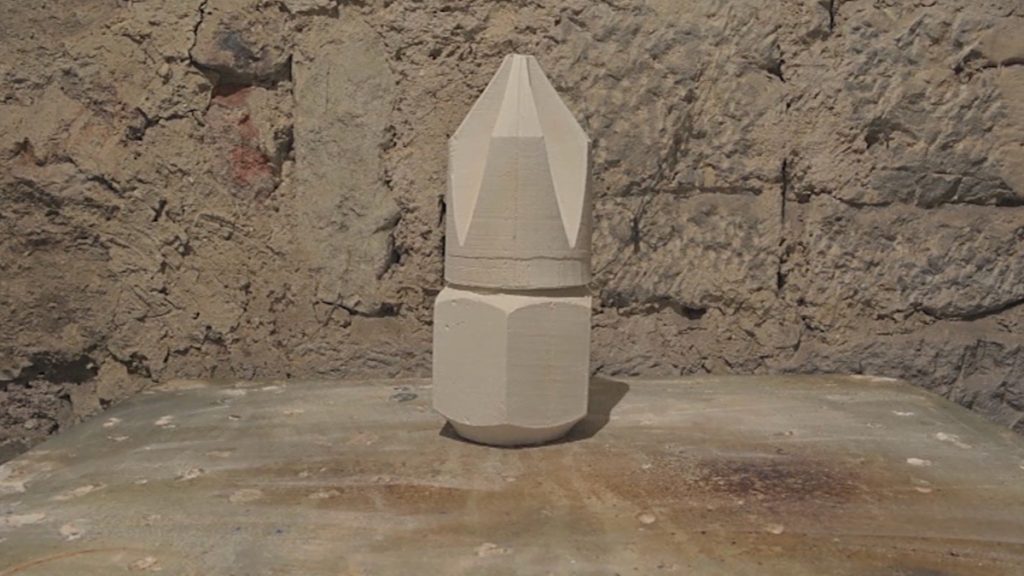
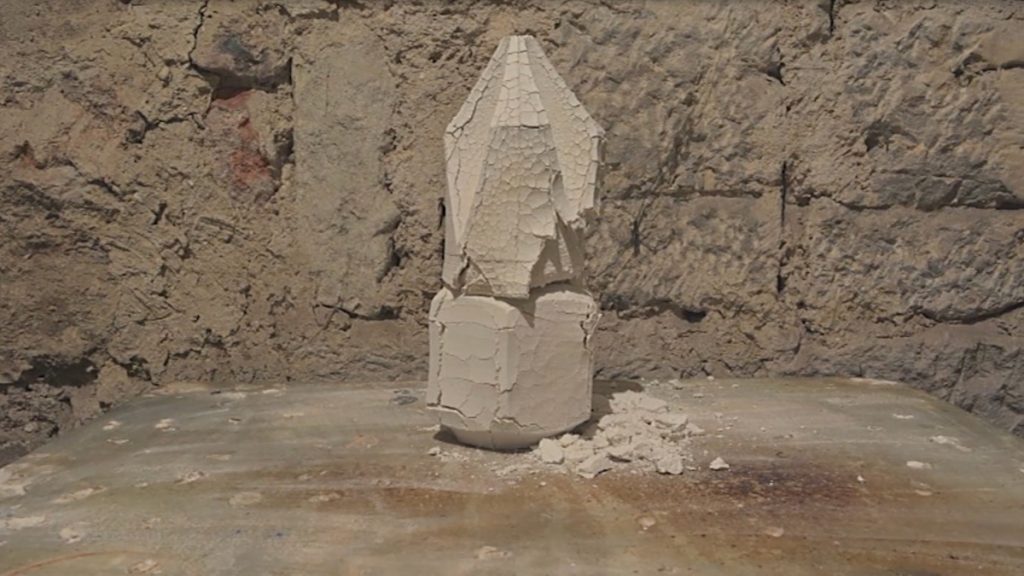
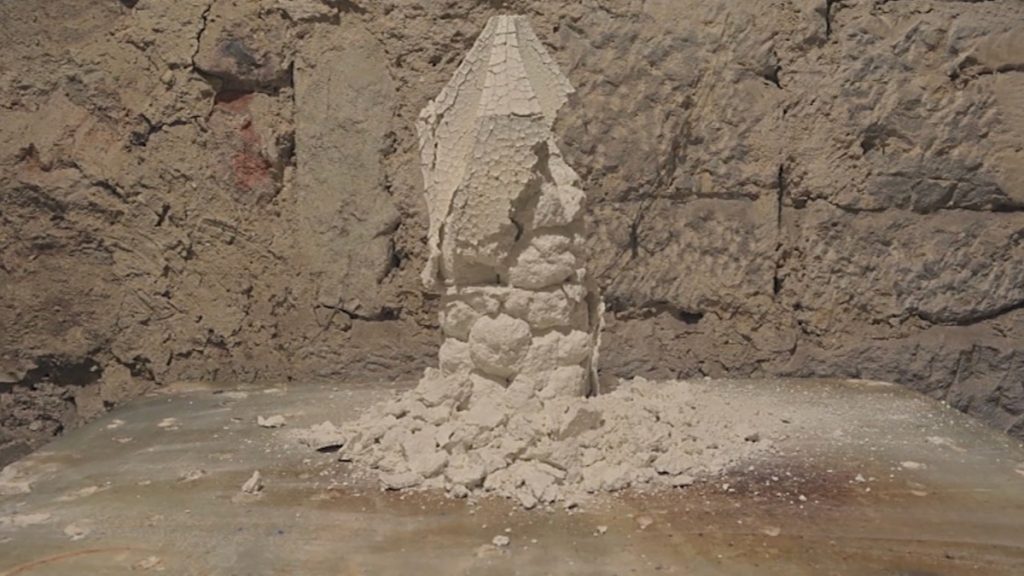
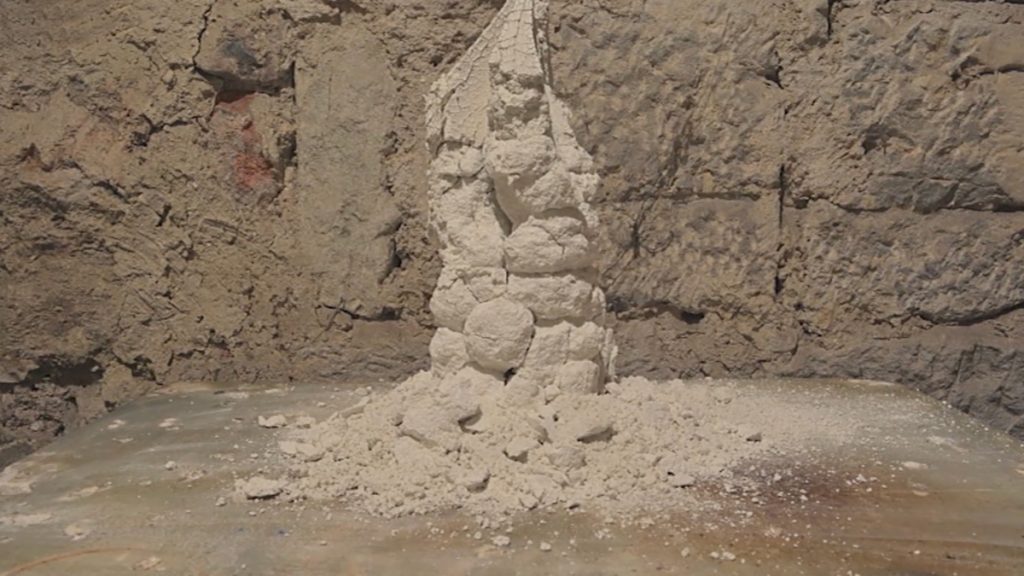
Recorded and produced in Romhild, Germany, 2018 Recording 6 days. This form was altered from the original file, Phillip drive bit PH.2 created by Gerard Boterman at grabcad.com



